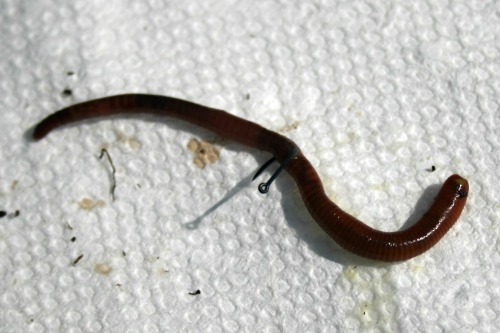Red Wiggler Express: Reliable Bait for a Enjoyable Fishing Day
Red Wiggler Express: Reliable Bait for a Enjoyable Fishing Day
Blog Article
Red Wigglers: The Unsung Heroes of Organic Waste Recycling
Red wigglers, or Eisenia fetida, serve as vital agents in the natural waste reusing procedure, changing disposed of products right into important vermicompost. As the world progressively seeks remedies to deal with waste build-up and enhance agricultural performance, comprehending the role of these worms becomes important.
What Are Red Wigglers?
The impressive durability of red wigglers, scientifically called Eisenia fetida, emphasizes their vital function in natural waste recycling. These little, reddish-brown earthworms are generally discovered in breaking down natural matter, such as compost heap and manure loads. Lake Hickory Bait. Unlike other earthworm species, red wigglers prosper in nutrient-rich environments and are very effective at damaging down organic products, making them important for vermicomposting

(Lake Hickory Bait)In addition to their function in waste reduction, red wigglers add to soil wellness by boosting soil structure and aeration with their burrowing activities (Lake Hickory Bait). Their existence in composting systems not just boosts decay rates but likewise advertises a lasting approach to lose monitoring, highlighting their importance in ecological conservation initiatives
Advantages of Composting With Worms
Composting with worms, specifically red wigglers, offers numerous advantages that improve both waste monitoring and dirt wellness. Initially, these worms efficiently break down organic waste, converting it into nutrient-rich vermicompost that enhances dirt. This process speeds up decay, permitting a faster recycling of kitchen scraps and other organic products contrasted to standard composting techniques.
Furthermore, the vermicompost created by red wigglers is including valuable microbes, which aid boost dirt framework, aeration, and moisture retention. This boosts the total wellness of plants, advertising energetic growth and increased returns in yards and farming settings. The use of worms in composting minimizes the manufacturing of greenhouse gases, such as methane, contributing to an extra lasting waste administration system.

How to Begin Vermicomposting
Developing a vermicomposting system is a straightforward process that can generate significant benefits for both waste administration and soil enrichment. To begin, pick a suitable container, such as a plastic bin or wooden box, with sufficient ventilation holes to make certain proper airflow. The dimensions ought to ideally be about 2 feet by 3 feet, allowing sufficient area for the worms to flourish.
Next, prepare bed linens material, which can include shredded newspaper, cardboard, or coconut coir. This bedding should be moistened to develop an ideal environment for the worms. As soon as the bed linens remains in location, introduce red wigglers (Eisenia fetida) into the bin, usually around one pound of worms for every single square foot of get more area.
Complying with the placement of worms, include organic waste, such as fruit and vegetable scraps, coffee premises, and smashed eggshells. With these steps, you will effectively launch a vermicomposting system that contributes to sustainable waste management and improves your dirt.
Keeping a Healthy And Balanced Worm Bin
(Red Wiggler Express)Keeping a worm container growing calls for routine focus and like make certain the health and wellness of the red wigglers and the efficiency of the composting procedure. Appropriate upkeep begins with monitoring the wetness levels; the container should perspire but not soaked. An excellent guideline is to preserve an uniformity similar to a wrung-out sponge.
Aeration is essential also. Delicately mixing the bed linens and food scraps every few weeks stops compaction and ensures that all worms have access to oxygen. In addition, it is very important to feed the worms appropriately. A well balanced diet regimen of fruit and vegetable scraps, coffee grounds, and smashed eggshells ought to be supplied in small amounts to avoid overfeeding, which can result in smells and pests.
Temperature regulation is one more essential facet. Red wigglers thrive in a series of 55 to 77 degrees Fahrenheit. If the container comes to be too hot or cold, the worms may become worried - Lake Hickory Bait. Occasionally examine for signs of health and wellness, such as worm population growth and the presence of healthy spreadings. By diligently managing these elements, one can maintain a durable and effective worm container.
Effect On Sustainable Living
The successful upkeep of a worm container not just profits the health of red wigglers yet additionally contributes substantially to lasting living practices. By reusing organic waste, such as kitchen area scraps and lawn debris, red wigglers help draw away considerable amounts of product from land fills. This reduction in waste not just decreases greenhouse gas discharges yet likewise decreases the environmental worry connected with waste management.
Additionally, the castings created by red wigglers function as a nutrient-rich organic plant food, improving dirt health and wellness and advertising plant development. This all-natural choice to chemical plant foods supports lasting agriculture and gardening techniques, minimizing reliance on artificial inputs that can damage communities. Furthermore, worm composting cultivates understanding of waste monitoring, urging people and neighborhoods to adopt more sustainable habits.

Final Thought
In summary, red wigglers serve as important contributors to organic waste reusing with their efficient disintegration of organic products. Their capacity to produce nutrient-rich vermicompost enhances dirt health and wellness and sustains lasting agricultural techniques. By integrating vermicomposting right into waste management strategies, people and areas can considerably decrease waste while promoting ecological sustainability. The role of Eisenia fetida in fostering healthy and balanced ecosystems emphasizes the value of these microorganisms in achieving lasting living and improving dirt fertility.
Report this page